Lidong Song
Load Profile Inpainting for Missing Load Data Restoration and Baseline Estimation
Nov 29, 2022Abstract:This paper introduces a Generative Adversarial Nets (GAN) based, Load Profile Inpainting Network (Load-PIN) for restoring missing load data segments and estimating the baseline for a demand response event. The inputs are time series load data before and after the inpainting period together with explanatory variables (e.g., weather data). We propose a Generator structure consisting of a coarse network and a fine-tuning network. The coarse network provides an initial estimation of the data segment in the inpainting period. The fine-tuning network consists of self-attention blocks and gated convolution layers for adjusting the initial estimations. Loss functions are specially designed for the fine-tuning and the discriminator networks to enhance both the point-to-point accuracy and realisticness of the results. We test the Load-PIN on three real-world data sets for two applications: patching missing data and deriving baselines of conservation voltage reduction (CVR) events. We benchmark the performance of Load-PIN with five existing deep-learning methods. Our simulation results show that, compared with the state-of-the-art methods, Load-PIN can handle varying-length missing data events and achieve 15-30% accuracy improvement.
MultiLoad-GAN: A GAN-Based Synthetic Load Group Generation Method Considering Spatial-Temporal Correlations
Oct 03, 2022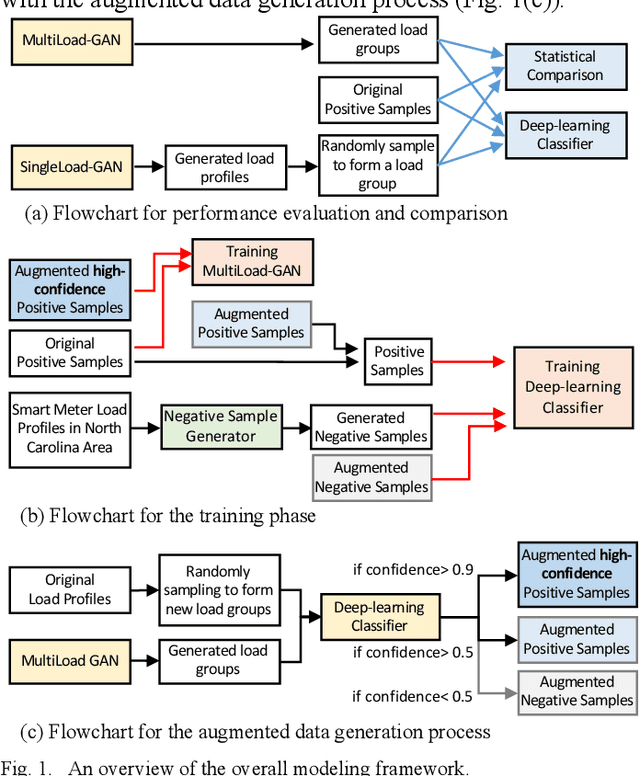
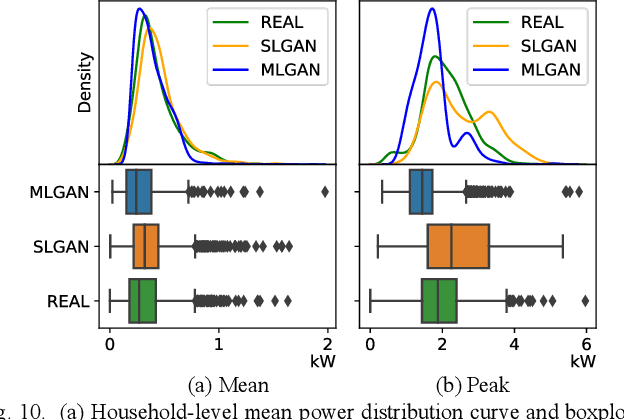
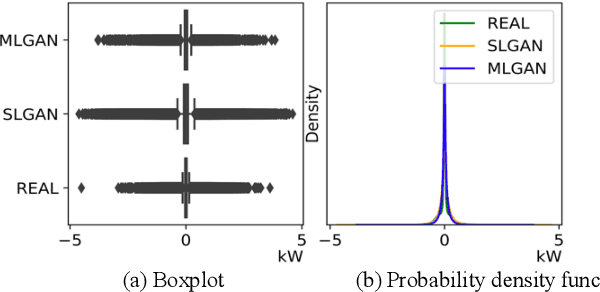
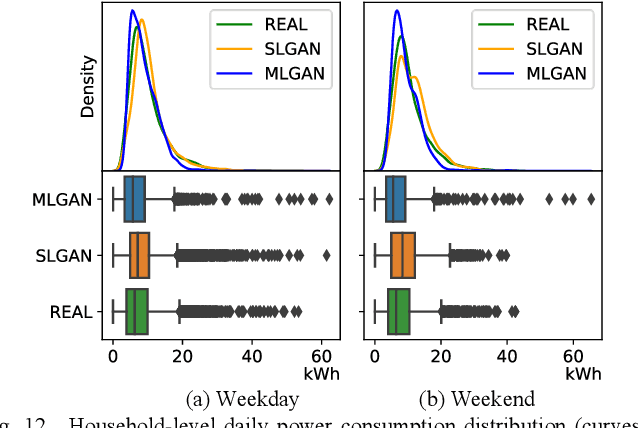
Abstract:This paper presents a deep-learning framework, Multi-load Generative Adversarial Network (MultiLoad-GAN), for generating a group of load profiles in one shot. The main contribution of MultiLoad-GAN is the capture of spatial-temporal correlations among a group of loads to enable the generation of realistic synthetic load profiles in large quantity for meeting the emerging need in distribution system planning. The novelty and uniqueness of the MultiLoad-GAN framework are three-fold. First, it generates a group of load profiles bearing realistic spatial-temporal correlations in one shot. Second, two complementary metrics for evaluating realisticness of generated load profiles are developed: statistics metrics based on domain knowledge and a deep-learning classifier for comparing high-level features. Third, to tackle data scarcity, a novel iterative data augmentation mechanism is developed to generate training samples for enhancing the training of both the classifier and the MultiLoad-GAN model. Simulation results show that MultiLoad-GAN outperforms state-of-the-art approaches in realisticness, computational efficiency, and robustness. With little finetuning, the MultiLoad-GAN approach can be readily extended to generate a group of load or PV profiles for a feeder, a substation, or a service area.
A TCN-based Spatial-Temporal PV Forecasting Framework with Automated Detector Network Selection
Nov 16, 2021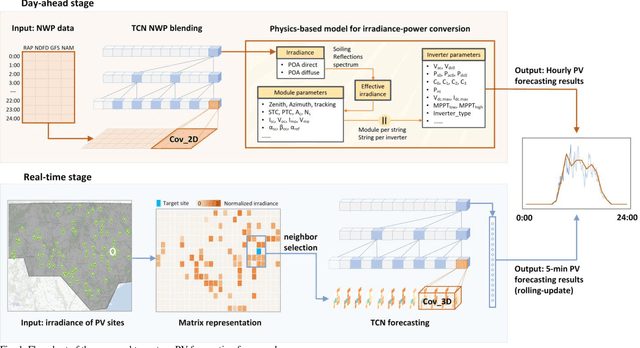
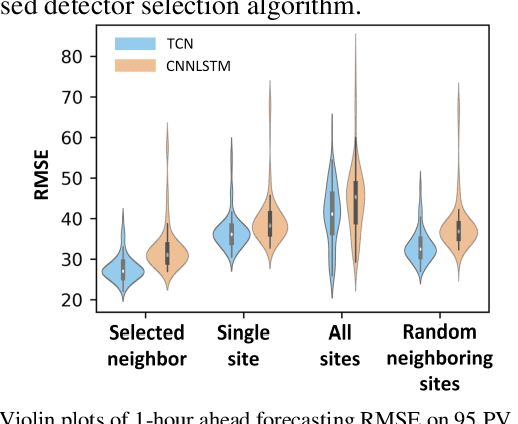
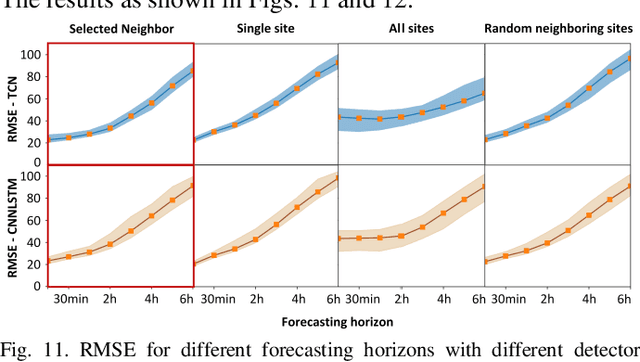

Abstract:This paper proposes a two-stage PV forecasting framework for MW-level PV farms based on Temporal Convolutional Network (TCN). In the day-ahead stage, inverter-level physics-based model is built to convert Numerical Weather Prediction (NWP) to hourly power forecasts. TCN works as the NWP blender to merge different NWP sources to improve the forecasting accuracy. In the real-time stage, TCN can leverage the spatial-temporal correlations between the target site and its neighbors to achieve intra-hour power forecasts. A scenario-based correlation analysis method is proposed to automatically identify the most contributive neighbors. Simulation results based on 95 PV farms in North Carolina demonstrate the accuracy and efficiency of the proposed method.
ProfileSR-GAN: A GAN based Super-Resolution Method for Generating High-Resolution Load Profiles
Jul 18, 2021
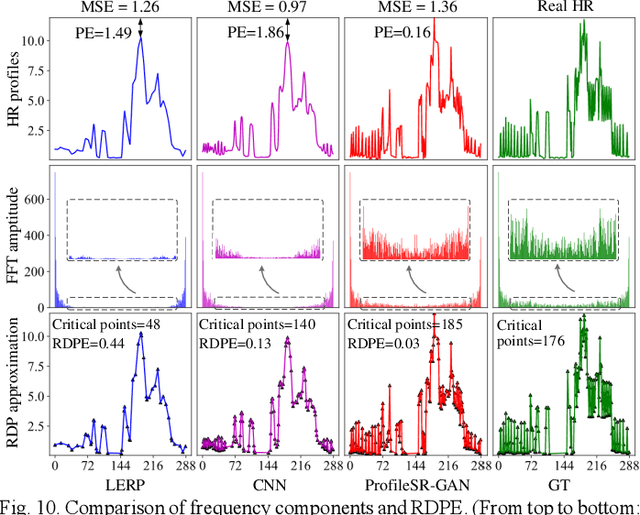
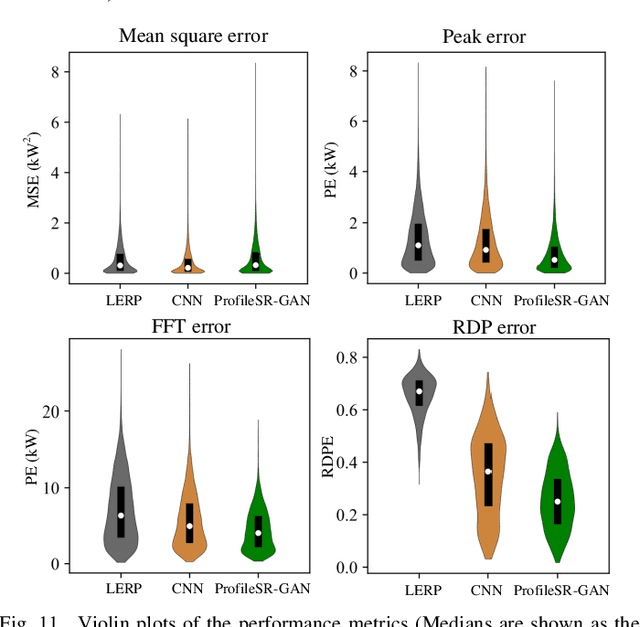
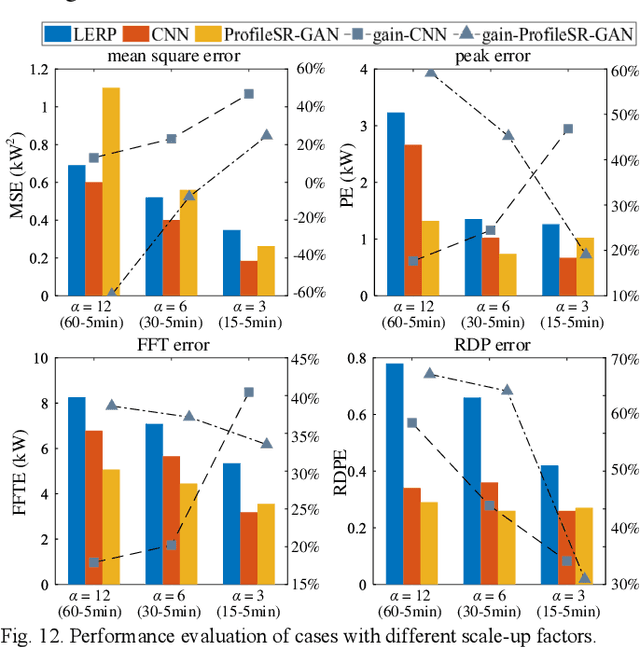
Abstract:It is a common practice for utilities to down-sample smart meter measurements from high resolution (e.g. 1-min or 1-sec) to low resolution (e.g. 15-, 30- or 60-min) to lower the data transmission and storage cost. However, down-sampling can remove high-frequency components from time-series load profiles, making them unsuitable for in-depth studies such as quasi-static power flow analysis or non-intrusive load monitoring (NILM). Thus, in this paper, we propose ProfileSR-GAN: a Generative Adversarial Network (GAN) based load profile super-resolution (LPSR) framework for restoring high-frequency components lost through the smoothing effect of the down-sampling process. The LPSR problem is formulated as a Maximum-a-Prior problem. When training the ProfileSR-GAN generator network, to make the generated profiles more realistic, we introduce two new shape-related losses in addition to conventionally used content loss: adversarial loss and feature-matching loss. Moreover, a new set of shape-based evaluation metrics are proposed to evaluate the realisticness of the generated profiles. Simulation results show that ProfileSR-GAN outperforms Mean-Square Loss based methods in all shape-based metrics. The successful application in NILM further demonstrates that ProfileSR-GAN is effective in recovering high-resolution realistic waveforms.
 Add to Chrome
Add to Chrome Add to Firefox
Add to Firefox Add to Edge
Add to Edge